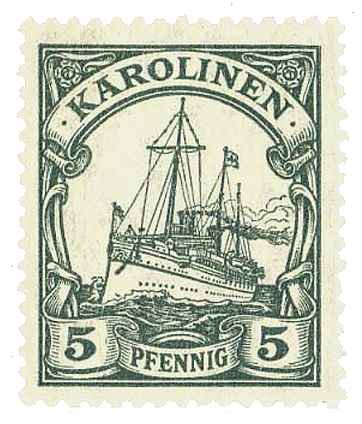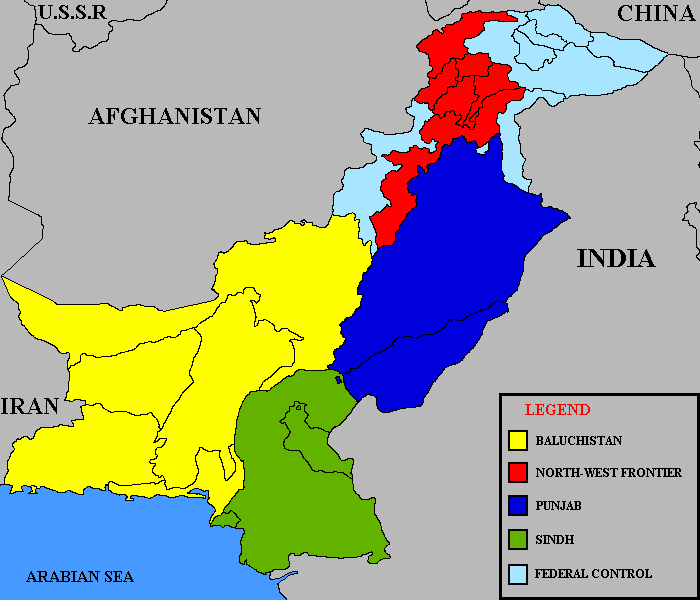|
Key Type Stamp
Key type stamps are stamps of a uniform design that were widely used by colonial territories in the 19th and 20th centuries. Origins The idea was invented by Perkins Bacon who used it to print stamps for Trinidad (1851), Barbados (1852) and Mauritius (1858), all featuring the same Britannia design. Key plate stamps The idea was refined by De La Rue in 1879 when the printing process was split into two through the use of a key plate (or ''head plate'') for the bulk of the design and a separate ''duty plate'' for the name of the colony and the value. Mackay, James. ''Stamp Collecting: Philatelic Terms Illustrated''. 4th edition. London: Stanley Gibbons, 2003, p.76. These are often known as ''key plate stamps''. While ''key type'' stamps are always of one colour, ''key plate'' stamps are bi-coloured. This method has the advantage that most of the design remains the same in each of a stamp series with only the value, name and colours changing. Key plate stamps were used extens ... [...More Info...] [...Related Items...] OR: [Wikipedia] [Google] [Baidu] |
Revenue Stamps Of The United Kingdom
Revenue stamps of the United Kingdom refer to the various revenue or fiscal stamps, whether adhesive, directly embossed or otherwise, which were issued by and used in the Kingdom of England, the Kingdom of Great Britain, the United Kingdom of Great Britain and Ireland and the United Kingdom of Great Britain and Northern Ireland, from the late 17th century to the present day. The first impressed duty stamps were issued by the Kingdom of England in accordance with the Stamps Act 1694. Impressed duty stamps were used to pay a multitude of taxes in the centuries since then, and they are still in use . The first adhesive revenue stamps were chocolate duty stamps issued in the 1740s, but no examples of these have survived today. The oldest known adhesive stamps of which examples still exist were issued in the 1780s for duties on hats, gloves and perfume. British revenue stamps therefore predate the first postage stamp, the Penny Black, which was issued in 1840. Surface printed r ... [...More Info...] [...Related Items...] OR: [Wikipedia] [Google] [Baidu] |
Eric Yendall
Eric Peter Yendall is a British philatelist who, in 2009, was awarded the Crawford Medal by the Royal Philatelic Society London for his work ''King George VI large key type revenue and postage high value stamps 1937-1953''."Eric Yendall Receives Crawford Medal" in The London Philatelist ''The London Philatelist'' was first published in January 1892 by [...More Info...] [...Related Items...] OR: [Wikipedia] [Google] [Baidu] |
Robson Lowe
John Harry Robson Lowe (7 January 1905, London – 19 August 1997, Bournemouth) was an English professional philatelist, stamp dealer and stamp auctioneer. Life and career Lowe is regarded by philatelists as the father of postal history, having published many definitive works on the subject and having introduced the term in his first major book ''Handstruck Postage Stamps of the Empire 1680–1900'' in 1948. In 1970 he was awarded the Lichtenstein Medal by the Collectors Club of New York. He started his philatelic career at Fox & Co. in 1926 and then established his own firm, Robson Lowe Ltd., in Regent Street, London, in 1926. He moved to 50 Pall Mall in 1940 and ran an auction business from Bournemouth starting in 1945. For health reasons he was unable to serve in the military during World War Two. Lowe refused to sign the Roll of Distinguished Philatelists due to the refusal of the organisers to remove the name of South African Adrian Albert Jurgens, whom he conside ... [...More Info...] [...Related Items...] OR: [Wikipedia] [Google] [Baidu] |
West Africa Study Circle
The West Africa Study Circle (WASC) is the "international specialist society for the study of stamps, postal stationery and postal history of West Africa." West Africa Study Circle, 28 November 2011. Retrieved 12 March 2012. The Circle publishes a regular journal, ''Cameo'', and books and monographs. The principal areas covered by the society are the of: *Ascension *The Cameroons *Gambia *Gold Coast/Ghana *Nigeria *St. Helena *Sierra Leone *Togo *Tristan da Cunha/Gough Island See also *Philip O. Beale
Philip Ormrod Beale FRPSL (born c. 1925) is a British postal historian and form ...
[...More Info...] [...Related Items...] OR: [Wikipedia] [Google] [Baidu] |
Peter E
Peter may refer to: People * List of people named Peter, a list of people and fictional characters with the given name * Peter (given name) ** Saint Peter (died 60s), apostle of Jesus, leader of the early Christian Church * Peter (surname), a surname (including a list of people with the name) Culture * Peter (actor) (born 1952), stage name Shinnosuke Ikehata, Japanese dancer and actor * ''Peter'' (album), a 1993 EP by Canadian band Eric's Trip * ''Peter'' (1934 film), a 1934 film directed by Henry Koster * ''Peter'' (2021 film), Marathi language film * "Peter" (''Fringe'' episode), an episode of the television series ''Fringe'' * ''Peter'' (novel), a 1908 book by Francis Hopkinson Smith * "Peter" (short story), an 1892 short story by Willa Cather Animals * Peter, the Lord's cat, cat at Lord's Cricket Ground in London * Peter (chief mouser), Chief Mouser between 1929 and 1946 * Peter II (cat), Chief Mouser between 1946 and 1947 * Peter III (cat), Chief Mouser between 1947 a ... [...More Info...] [...Related Items...] OR: [Wikipedia] [Google] [Baidu] |
Yacht Issue
The Yacht issue was a series of postage stamps, bearing the image of German Kaiser's yacht, '' SMY Hohenzollern II'', that were used in all of Germany's overseas colonies. Millions of stamps were produced and they were the principal means of postage for all German imperial overseas possessions in the years 1900–1915. German colonies at that time were German Samoa, Kiautschou Bay, Togoland, Kamerun, German New Guinea, German South-West Africa, and German East Africa. History The German colonies were all acquired between 1884 and 1899. They belonged to the Universal Postal Union and used the same postage rates as the mainland German Empire. Initially, regular Imperial stamps from the mainland were used, and only their cancellation marks would reveal their colonial usage; later, the names of the individual colonies were overprinted upon the regular stamps before sale. In 1900, a new stamp design was released for universal use in all the colonies. Redolent of the imperial grand ... [...More Info...] [...Related Items...] OR: [Wikipedia] [Google] [Baidu] |
Omnibus Issue
In philately, an omnibus issue is an issue of stamps by several countries with a common subject and which may share a uniform design. Omnibus issues have often been made by countries under common political control or groups of colonies due to the close co-operation required to produce the issue. Omnibus issues are to be distinguished from joint issues which are usually much smaller in scope. The first omnibus issue The first omnibus has been said to be the issue of 1898 by the Portuguese colonial empire to commemorate the quatercentenary of Vasco de Gama's discovery of the sea route to India. File:Portugal 1898 Mi 140 stamp (Departure at Belem 07.07.1497).jpg, Portugal File:Azores 1898 Mi 92 stamp (Departure at Belem 07.07.1497).jpg, Azores File:Madeira 1898 Mi 35 stamp (Departure at Belem 07.07.1497).jpg, Madeira File:Portuguese Africa 1898 Mi 3 stamp (Departure at Belem 07.07.1497).jpg, Portuguese Africa File:Portuguese India 1898 Mi 170 stamp (Departure at Belem 07.07.1497 ... [...More Info...] [...Related Items...] OR: [Wikipedia] [Google] [Baidu] |
Navigation And Commerce Issue
The Navigation and Commerce issue is a series of key type stamps issued for the colonial territories of France. It was designed by Louis-Eugène Mouchon. The issue uses a standard design featuring allegorical representations of navigation and commerce. The territory name is imprinted in a rectangular cartouche centered at the bottom of the stamp. In French colonies, it is the first series of territory-specific postal releases. Adding the territory name helped reduce revenue loss incurred when stamps were purchased in colonies with low-value currencies, then sold or used in colonies with high-valued currencies. It was first released in 1892, with later releases featuring new color schemes. Dates vary by territory, but by 1900 values start appearing surcharged in red or black ink to use the remaining stocks while colonies then used illustrated stamps. List of French territories that used Navigation and Commerce stamps File:Stamp Anjouan 1892 1c.jpg, Anjouan File:Stamp Beni ... [...More Info...] [...Related Items...] OR: [Wikipedia] [Google] [Baidu] |
Revenue Stamps Of Pakistan
Pakistan first issued revenue stamps when it became independent in 1947 and continues to issue revenues to this day. In addition to national issues, the provinces of Balochistan, North West Frontier, Punjab, Sindh, as well as Azad Jammu and Kashmir, West Pakistan and the capital Islamabad also have or had their own stamps. Until 1947 Pakistan was part of India, and used Indian revenue stamps. A number of princely states which issued their own revenues also became part of Pakistan following independence, and therefore may also be considered as Pakistani forerunner issues. These include Bahawalpur and Las Bela. Prior to 1971, Pakistani national issues were used in both West Pakistan and East Pakistan. Later that year East Pakistan became the independent state of Bangladesh, which issues its own revenues to this day. National issues Like Great Britain and India, some of Pakistan's revenues were keytypes. They showed the star and crescent, Pakistan's national insign ... [...More Info...] [...Related Items...] OR: [Wikipedia] [Google] [Baidu] |
Revenue Stamps Of Malta
Revenue stamps of Malta were first issued in 1899, when the islands were a British colony. From that year to 1912, all revenue issues were postage stamps overprinted accordingly, that was either done locally or by De La Rue in London. Postage stamps also became valid for fiscal use in 1913, so no new revenues were issued until 1926–1930, when a series of key type stamps depicting King George V were issued. These exist unappropriated for use as general-duty revenues, or with additional inscriptions indicating a specific use; Applications, Contracts, Registers or Stocks & Shares. The only other revenues after this series were £1 stamps depicting George VI and Elizabeth II. Postage stamps remained valid for fiscal use until at least the 1980s. Malta also used impressed duty stamps from the 1920s until these were replaced by pre-printed revenues in the 1970s. The latter were discontinued in the early 1990s. Malta also had specific stamps for Workmen's Compensation (1929–1956 ... [...More Info...] [...Related Items...] OR: [Wikipedia] [Google] [Baidu] |
Revenue Stamps Of Ireland
Revenue stamps of Ireland refer to the various revenue or fiscal stamps, whether adhesive, directly embossed or otherwise, which have been used on the island of Ireland since 1774. These include issues by the Kingdom of Ireland, issues by the United Kingdom specifically for use in Ireland or briefly Southern Ireland, and issues of an independent southern Ireland since 1922 (including the Provisional Government of Ireland, the Irish Free State and the Republic of Ireland). Revenue stamps of Northern Ireland were also issued from 1921 to the 1980s, but they are not covered in this article. Union with Britain In the 18th century, Ireland was an independent kingdom in personal union with and a ''de facto'' client state of the Kingdom of Great Britain, and in 1801 both kingdoms were merged into the United Kingdom of Great Britain and Ireland. During this period, some revenue stamps of the United Kingdom – both directly embossed or adhesive – were used in Ireland. Howev ... [...More Info...] [...Related Items...] OR: [Wikipedia] [Google] [Baidu] |






